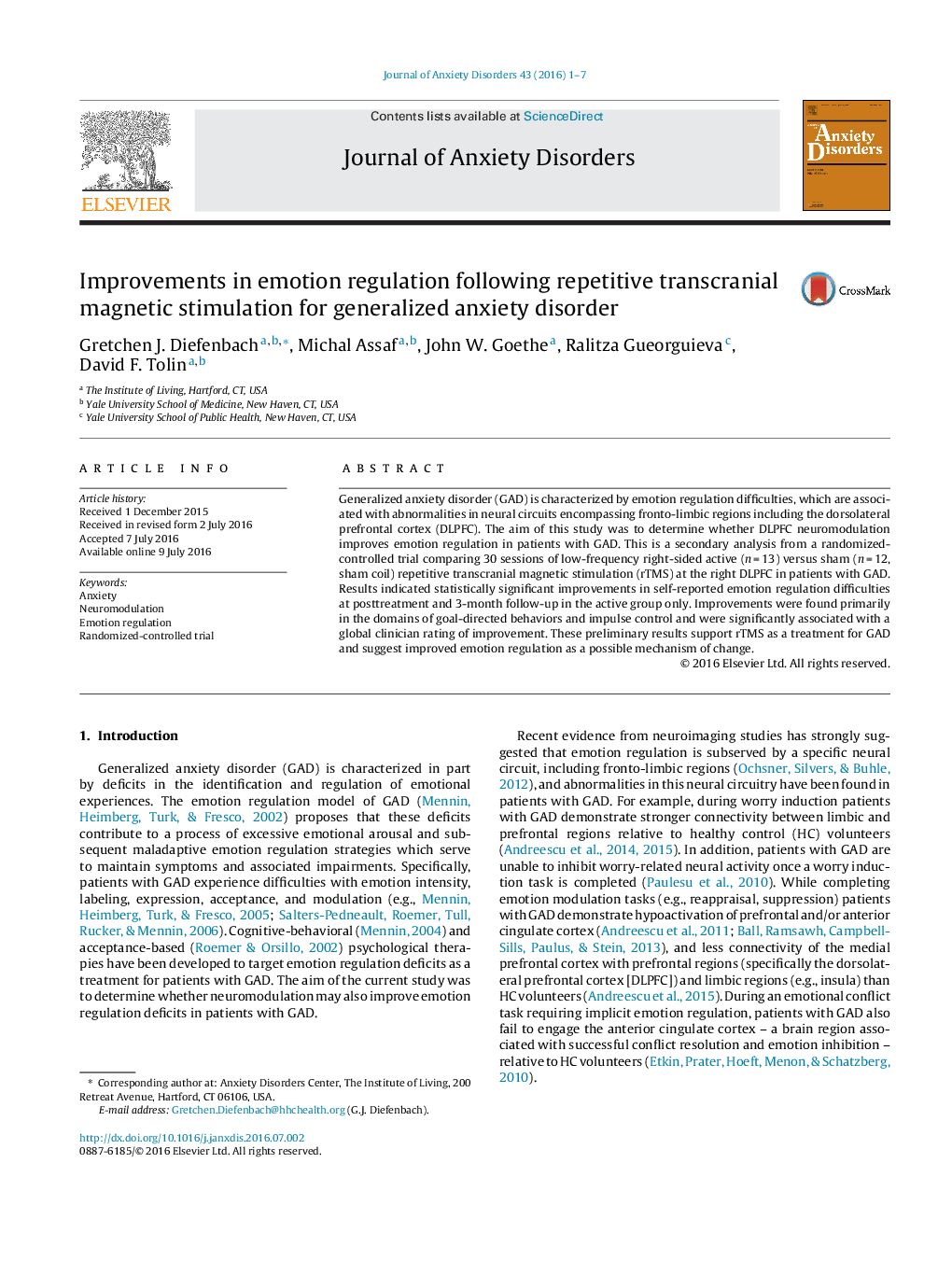| Article ID | Journal | Published Year | Pages | File Type |
|---|---|---|---|---|
| 909196 | Journal of Anxiety Disorders | 2016 | 7 Pages |
•Emotion regulation improved following active, but not sham, neuromodulation.•Improvements were found primarily in goal-directed behaviors and impulse control.•Emotion regulation changes were associated with global clinical improvement.
Generalized anxiety disorder (GAD) is characterized by emotion regulation difficulties, which are associated with abnormalities in neural circuits encompassing fronto-limbic regions including the dorsolateral prefrontal cortex (DLPFC). The aim of this study was to determine whether DLPFC neuromodulation improves emotion regulation in patients with GAD. This is a secondary analysis from a randomized-controlled trial comparing 30 sessions of low-frequency right-sided active (n = 13) versus sham (n = 12, sham coil) repetitive transcranial magnetic stimulation (rTMS) at the right DLPFC in patients with GAD. Results indicated statistically significant improvements in self-reported emotion regulation difficulties at posttreatment and 3-month follow-up in the active group only. Improvements were found primarily in the domains of goal-directed behaviors and impulse control and were significantly associated with a global clinician rating of improvement. These preliminary results support rTMS as a treatment for GAD and suggest improved emotion regulation as a possible mechanism of change.
